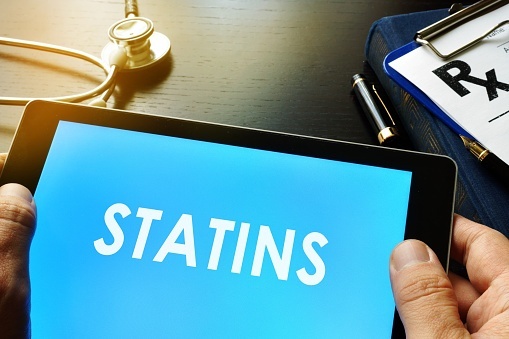
Statins can prevent cardiac disruption by suppressing key cellular receptors known as G protein-coupled receptors (GPCRs), and their interconnected partner, called G proteins, according to new research published in Molecular Pharmacology.
Researchers uncovered previously unknown benefits of statins while investigating why they cause negative side effects such as blurred vision, short-term memory loss and increased risk of diabetes. Statins are designed to target and impede the cholesterol-synthesis pathway, making them an effective and popular therapeutic option for lowering cholesterol. However, parts of the cholesterol-synthesis pathway are needed for the GPCR signaling pathway to function, giving rise to temporary negative side effects. Moreover, GPCR signaling is crucial to human survival, and represent a critical pharmaceutical drug target (more than one-third of all drugs on the market), since GPCR pathways regulate a variety of functions, from vision to heart rate and neurotransmission. This process, however, can also disturb cardiac function.
The study was performed using human cells. Scientists used light to control cell behavior through a novel method called subcellular optogenetics, and then studied the way cells responded to light through transduction pathways.
“We observed that different types of statins induce very different deviations or changes to G proteins in the GPCR pathway,” said Mithila Tennakoon, a PhD student at the University of Toledo and lead author on the study, in a press release discussing the findings.
Study explaining side effects of statins finds drug can have unexpected benefits – https://t.co/ahTPVTcAJp pic.twitter.com/d1qXbk3fDe
— Dataemia (@Dataemia) March 19, 2019
New Doors Opened
The University of Toledo researchers also revealed another critical finding: statins can mitigate the ability of migratory cells, such as cancer and immune cells, to travel. While testing GPCR-directed cell invasion, Karunarathne’s lab reported that statins decreased movement more than 10-fold compared to the control group.
“This indicated that GPCR-governed cancer cell migration also can be reduced by statins,” said Dr. Ajith Karunarathne, assistant professor in The University of Toledo Department of Chemistry and Biochemistry. These findings help explain the molecular sources for side effects of statins, which the team’s findings suggest can have different effects on tissues and organs.
“The side effects of statins are not uniform,” Dr. Karunarathne said. “Cells in the eyes, brain, heart and lungs can have completely different impact levels because they have different types of G proteins.”
Dr. Karunarathne felt that these findings could change the way physicians provide statins to their patients, adding that the researchers believe that “this, and our future investigations can help physicians make more informed decisions about prescribing statins, opening a whole new door to what statins can do in addition to cholesterol control.”
Study explaining side effects of statins finds drug can have unexpected benefits https://t.co/RGcIlXPxGS
— Crwe World (@CrweWorld) March 19, 2019
Study explaining side effects of statins finds drug can have unexpected benefits https://t.co/cEHjNfC8xM via @EurekAlert
— Joel "Heart Prevention" Kahn MD, FACC (@drjkahn) March 20, 2019







 © 2025 Mashup Media, LLC, a Formedics Property. All Rights Reserved.
© 2025 Mashup Media, LLC, a Formedics Property. All Rights Reserved.